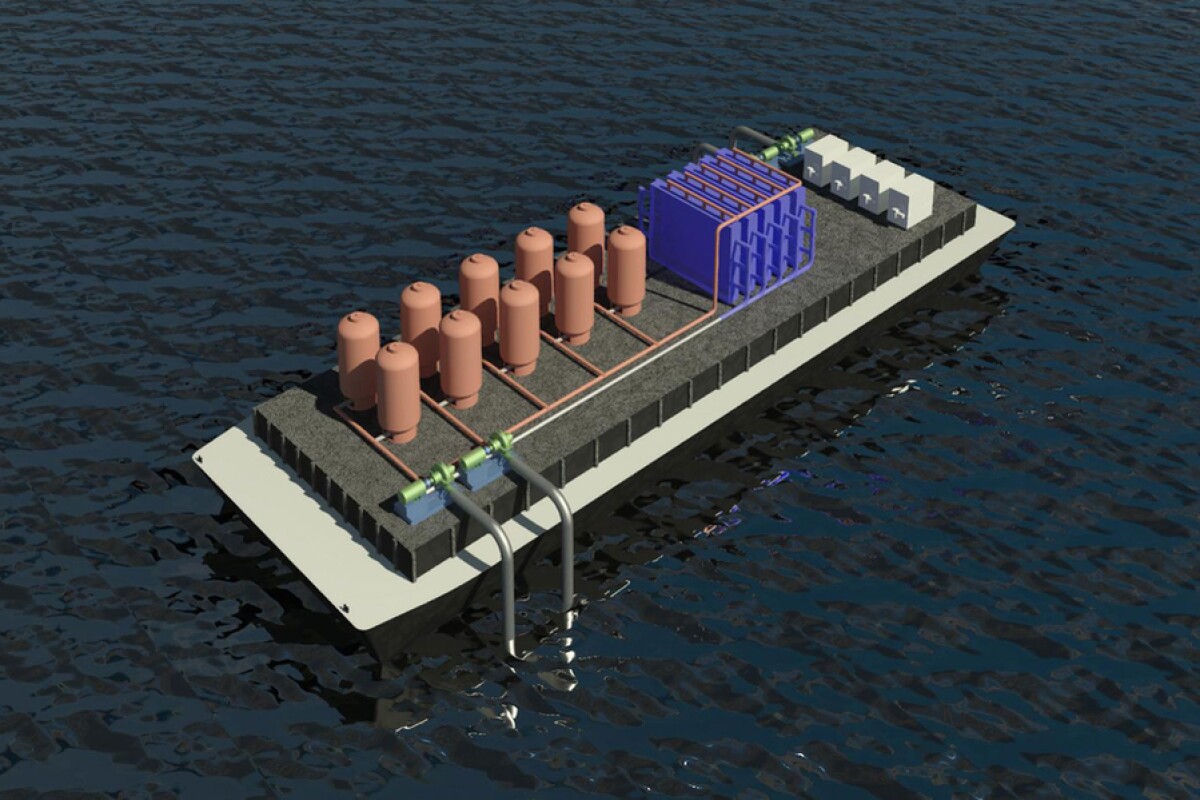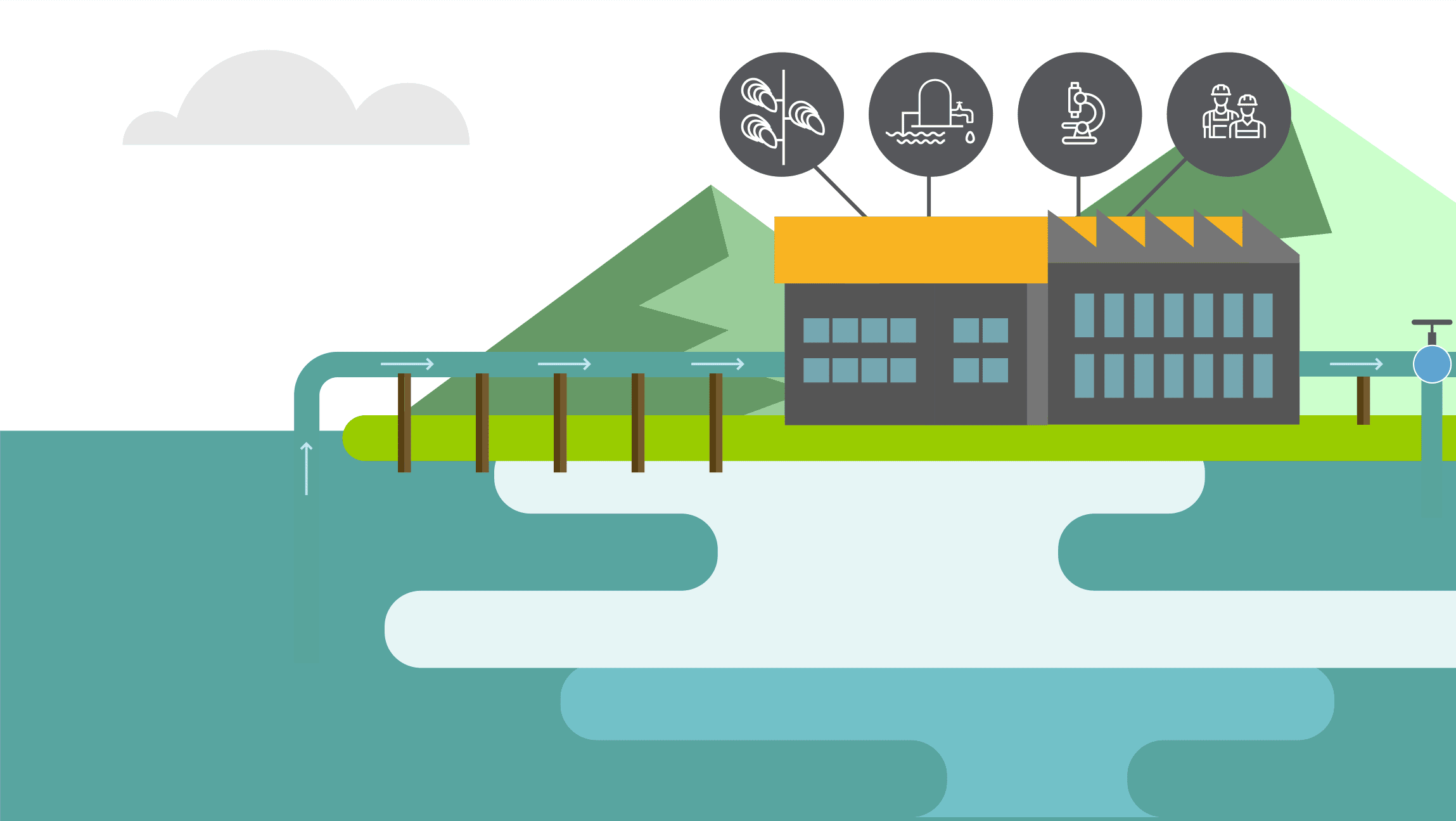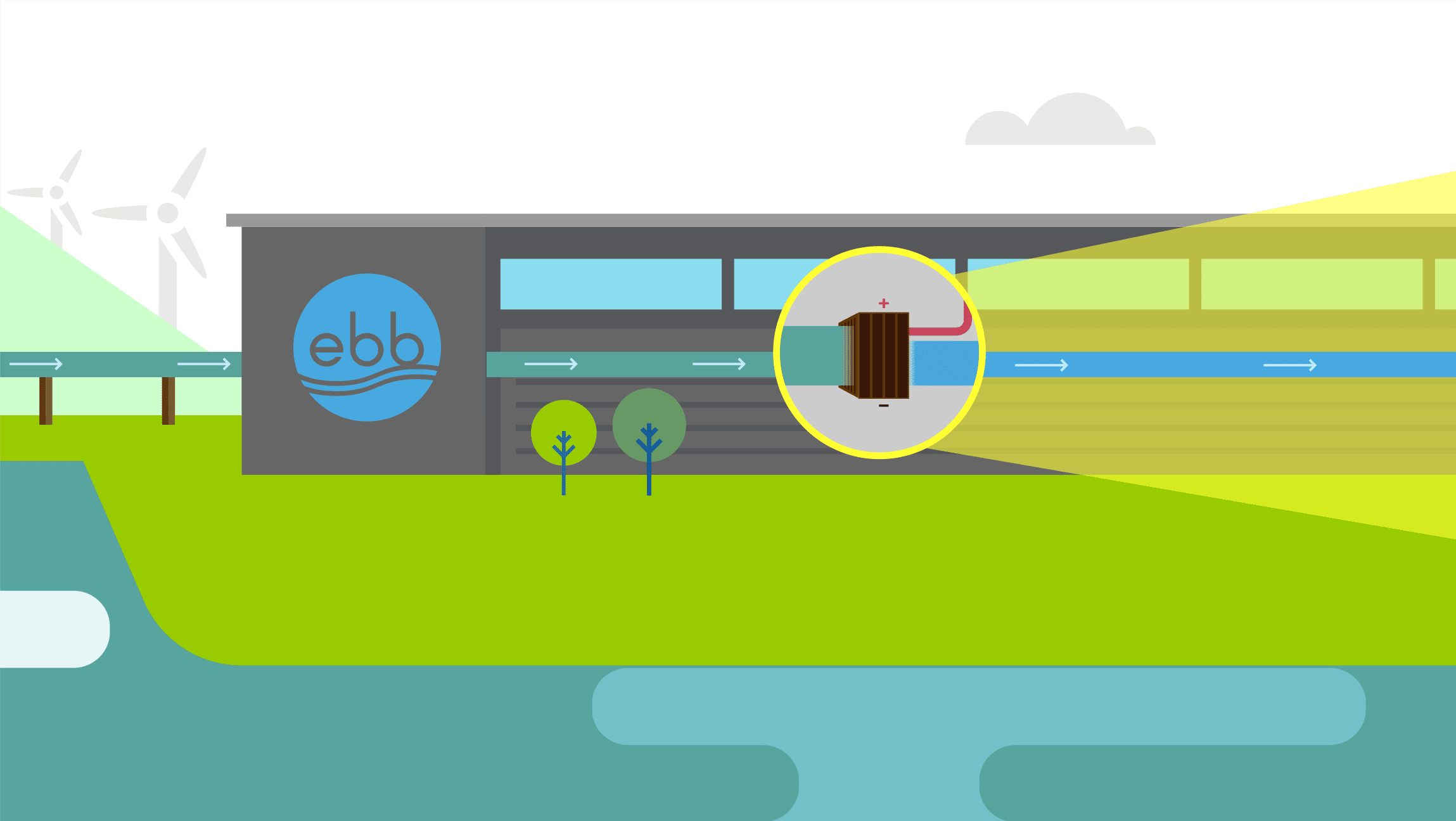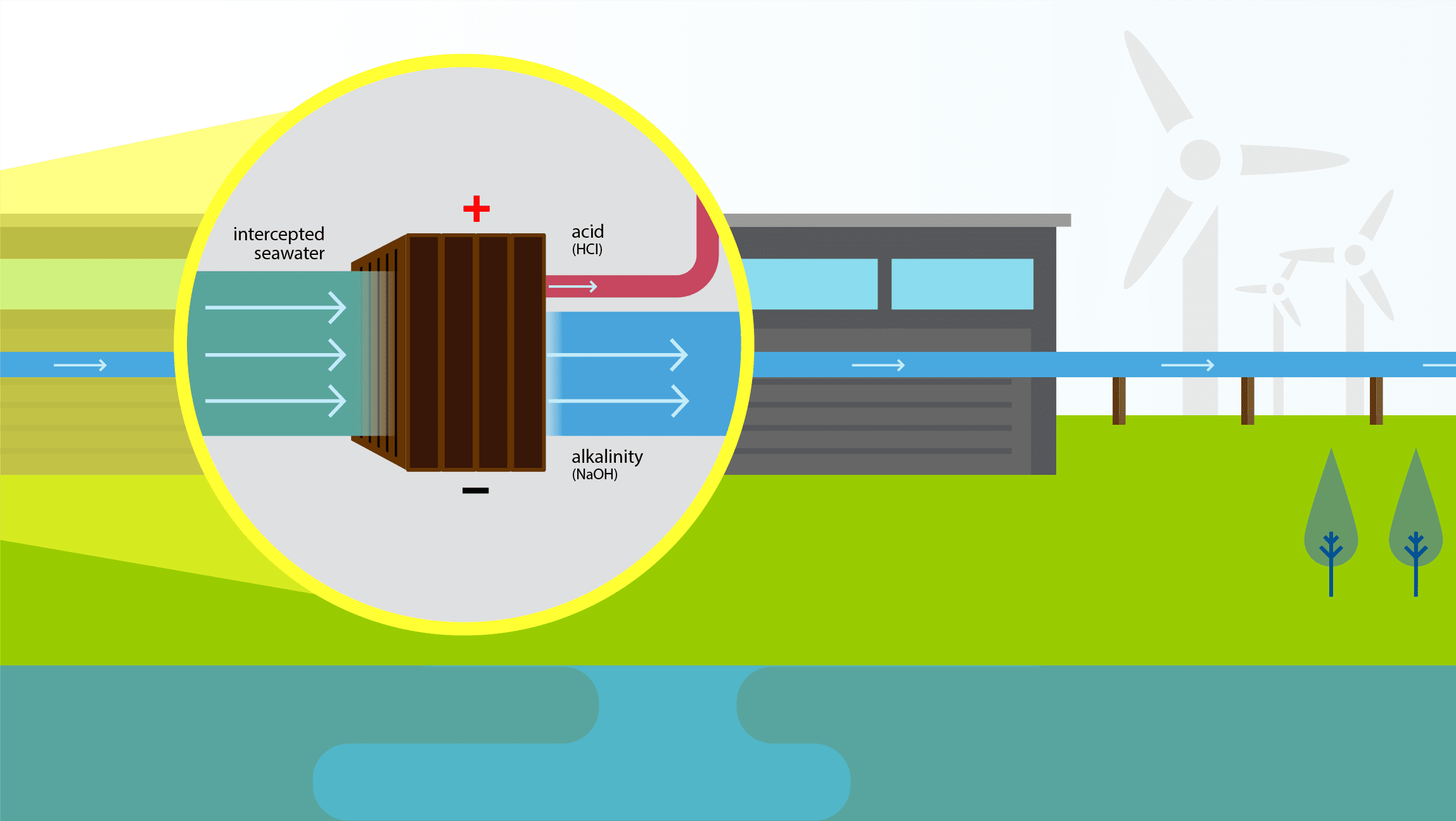
As the climate crisis intensifies, the ocean continues to play a crucial role in carbon capture, absorbing roughly a quarter of all CO₂ emissions globally.
With growing concerns around rising emissions, some companies are exploring innovative ways to leverage the ocean's natural ability to absorb CO₂, advancing a process known as Direct Ocean Capture (DOC).
This technique directly removes dissolved carbon dioxide from seawater, offering an efficient, potentially lower-cost alternative to Direct Air Capture (DAC).
Here’s a closer look at four companies driving DOC technology forward: Brineworks, Captura, Sea02, and Ebb Carbon.
>> RELATED: SoCalGas and Captura Begin Testing Innovative Direct Ocean Carbon Removal Technology

What is Direct Ocean Capture?
Direct Ocean Capture targets CO₂ removal by harnessing the ocean’s carbon absorption properties. Similar to DAC, which extracts CO₂ from the air, DOC removes dissolved CO₂ from seawater, allowing it to be stored or repurposed.
Given that the ocean holds approximately 150 times more CO₂ than the atmosphere, DOC has potential for efficiency and cost-effectiveness in comparison to air-based CO₂ removal methods.
This makes DOC a promising approach as companies seek solutions that work with natural systems to scale up carbon removal efforts.
Brineworks: Combining Carbon Removal with Hydrogen Production
The Amsterdam-based company Brineworks has made strides in using electrolysis to split water molecules, creating a system that removes CO₂ from seawater while generating hydrogen as a byproduct.
“We believe that by integrating clean energy sources like solar and wind, Brineworks’ technology can offer a truly renewable solution for carbon removal,” says a spokesperson for Brineworks.
This approach minimizes environmental impact by returning pure water back to the sea, free from chemical additives.
Innovation Note: Brineworks aims to achieve a cost of less than $100 per ton of CO₂ at full operational scale, which is about half the average cost associated with DAC.
Additional Impact: The production of green hydrogen, a byproduct of the process, aligns with the push for sustainable hydrogen to decarbonize heavy industries like steel and cement.
The recent $2.2 million in funding from investors will be used to advance Brineworks’ technology further.
Captura: Electrodialysis Innovation with Major Backing

Captura’s Direct Ocean Capture method employs electrodialysis to extract CO2 from seawater.
Captura, a Caltech spin-off, uses electrodialysis to draw CO₂ out of ocean water. The process works by acidifying the water, releasing CO₂, and capturing it through a specialized membrane.
Supported by the U.S. Department of Energy and partners like Norway’s Equinor, Captura aims to leverage existing infrastructure, such as desalination plants, to make DOC accessible and scalable.
“Captura’s DOC system represents a critical leap forward in carbon removal, relying entirely on renewable energy,” emphasizes a representative from Captura.
This innovation not only captures CO₂ but also requires no additives, resulting in minimal environmental disruption.
- Project Highlight: A pilot project in Hawaii, backed by Equinor, is set to capture 1,000 tons of CO₂ annually, marking a significant step toward scaled DOC.
Sea02: Expanding Sequestration with European Partnerships
Sea02, affiliated with the World Economic Forum’s Uplink initiative, also utilizes electrodialysis to separate CO₂ from seawater.
Once captured, the CO₂ can be sequestered or repurposed, with decarbonized water re-entering the ocean to absorb more CO₂.
The company is actively working to secure storage providers in Europe, aiming to establish long-term sequestration partnerships.
“Our goal is ambitious, but achievable,” says a spokesperson for Sea02. They aim to reach one gigaton of CO₂ removal annually by 2045, scaling up from a current capacity of 250 tons per year.
- Ambitious Target: Sea02’s 2045 goal of removing one gigaton per year positions it as a key player in ocean-based carbon removal.
Ebb Carbon: Addressing Ocean Acidification through Alkaline Solutions
Ebb Carbon stands out in the DOC field by focusing on facilities that naturally process large volumes of seawater, such as aquaculture and desalination plants.
Ebb’s technology separates seawater into acidic and alkaline solutions, returning the alkaline portion to the ocean, where it binds CO₂ to form bicarbonate—a stable storage form of CO₂.
Beyond CO₂ capture, Ebb’s process mitigates ocean acidification, which impacts marine ecosystems.
“Ebb’s approach offers dual benefits: reducing CO₂ levels while helping stabilize ocean acidity,” says a spokesperson from Ebb.
This aspect of the technology is essential for preserving marine life, including sensitive species like shellfish and coral.
- Environmental Benefit: By addressing acidification, Ebb’s technology has the potential to support biodiversity while capturing and storing CO₂ for thousands of years.
>> In Other News: Carbon Ridge Secures Funding to Advance Development of Its OCCS Technology
Looking Ahead: The Role of DOC in Climate Mitigation
Direct Ocean Capture is in its early stages but shows promise as a scalable, cost-effective method of carbon removal.
These companies are working to harness the ocean’s natural CO₂ absorption ability, positioning DOC as a valuable tool for achieving global climate goals.
The World Economic Forum’s Uplink initiative is also backing sustainable ocean solutions, emphasizing the potential of DOC within the regenerative blue economy framework.
As more companies enter the DOC space and funding opportunities expand, the future of ocean-based carbon capture looks promising.
Subscribe to the newsletter
Daily decarbonization data and news delivered to your inbox
Follow the money flow of climate, technology, and energy investments to uncover new opportunities and jobs.
Latest issues
-
How Direct Air Capture Could Drop 75% in Cost
Inside This Issue 💨 How Direct Air Capture Could Drop 75% in Cost ⚡ Cache Power Advances 30 GWh Compressed Air Energy Storage Project In Alberta 🪨 Canada Nickel And The University Of Texas At Aust...
-
EPA Rule Unlocks $20B Biofuels Boom: The Decarbonization Players Who Gain
Inside This Issue 🌾 EPA Rule Unlocks $20B Biofuels Boom: The Decarbonization Players Who Gain ⛏️ DMS Georgia: World’s First Deep Mine Carbon Storage 💧 Dirty Water Boosts Prospects for Clean Hydrog...
-
Inside the Power Plant Conversion Everyone’s Arguing About
Inside This Issue ⚡ In Controversial Move, LADWP Says It Will Shift Its Largest Gas Power Plant to Hydrogen 🌎 NorthX Catalyzes the Rise of Canada's Carbon Removal Industry 🤝 Elemental Clean Fuels ...
Company Announcements
-
Highlights Unlocking additional value from carbon sequestration and mineral by-products from Canada Nickel Company Inc. tailings Enabling multiple low-carbon industries: blue-green hydrogen, ammo...
-
Scientists Suggest Nuclear Waste May Fuel a Clean Energy Revolution
Hydrogen production unit from nuclear waste proposed by Vandenborre et al. (Vandenborre et al., 2024). Credit: Nuclear Engineering and Design (2025). DOI: https://doi.org/10.1016...
-
News provided by Chestnut Carbon Chestnut Carbon has sold forest carbon removal credits to TD Bank, supporting the Bank's operational emissions offset and broader climate strategy NEW YORK, Nov. ...
-
CHAR Tech Invited To Join The Canadian Iron & Steel Energy Research Association (CISERA)
TORONTO, Oct. 29, 2025 (GLOBE NEWSWIRE) -- CHAR Technologies Ltd. ("CHAR Tech" or the "Company") (TSXV:YES), a leader in sustainable energy solutions, is pleased to announce that it has been invite...


